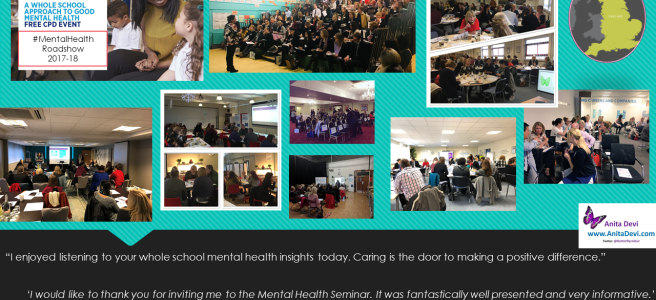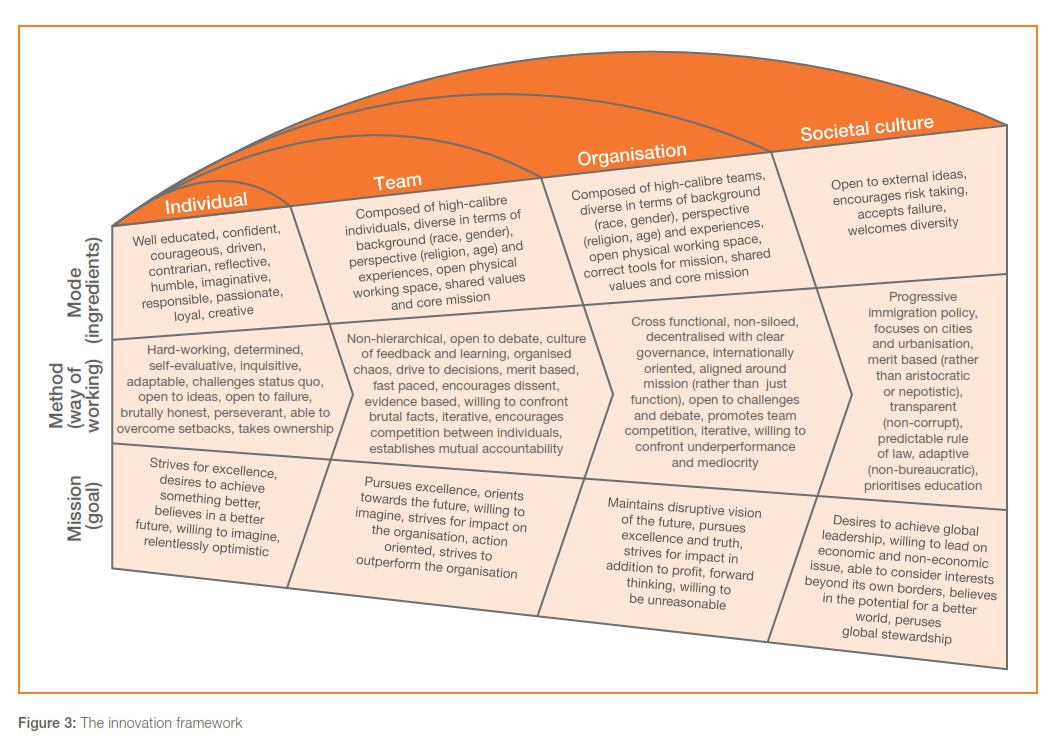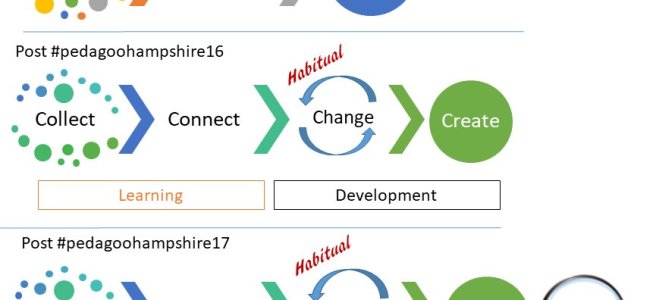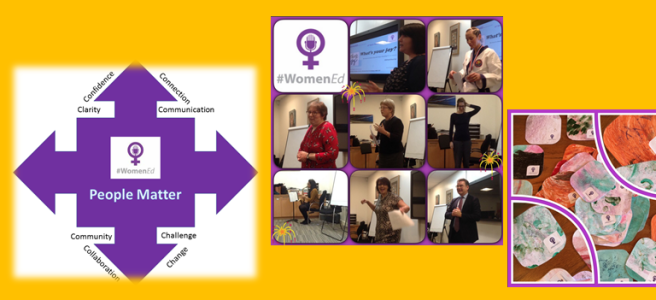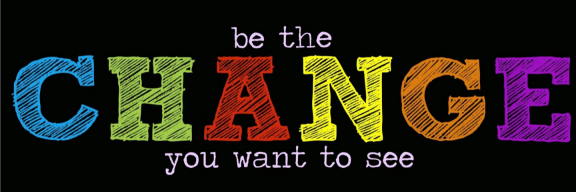These blogs were first published on http://www.staffrm.io as separate pieces over a two year period
#1 Microwave promotions are not the answer!
I wouldn’t say I am an avid blogger. I tend to write after I have mulled for a long period of time & I still feel there is something to be said. I envisage this blog stirring different reactions in different people & that’s ok. I always encourage students to read with criticality, and not with criticism. The two are different, but that’s a story for another time. As is the distinction between teacher wellbeing & teacher workload – watch this space!
Over the years, I have trained, mentored & coached trainee teachers, NQTs, aspiring leaders, middle leaders, SENCOs & senior leaders/ head teachers. To all these groups, I have always shared the four-word mantra: be kind to yourself.
There is no doubt, we have a teacher/head teacher recruitment & retention problem.
A 34-year-old deputy shared with me recently that he was coming to the end of his 6th year of being a deputy & wondering what next? Headship may now be possible, but for how long & then what? Career trajectory, I think was the term he used. The other concern was two decades of headship meant X number of Ofsted inspections. What happened to making a difference to children & young people? I also met a mature student SENCO recently, who is NQT +2 (i.e. 3rd year of teaching) … and she was considering leaving as an option. Like the deputy, this SENCO had been promoted early on in her career because she was outstanding in the classroom as an NQT. What she hadn’t shared, was to be outstanding during that 1st year, she was putting in ridiculous hours. So promotion & additional responsibility added to that without her finding her feet & embedding her practice.
As a senior leader, ten years ago, I remember receiving information from Teachers’ Pension informing me of the need/requirement to work till I was 67! After the initial shock, I called in pension experts to speak to the staff & also held discussions with staff about pacing their career. This was accelerated also by me becoming aware that the route into local authority roles was not going to be an option for long. So, pacing is good, but we live in a society where everything is instant & overnight success an expectation – why? No longer career pathways, but microwave promotions!
With this in mind, I would like to propose a seasons of life model:
0-20 years (Winter) – ROOTS These are the foundation years, where not much may be seen on the top, but a lot of sustainable, deep rooted growth is happening underground through a variety of experiences and opportunities.
20-40 years (Spring) – SHOOTS Growth breaks through & there are manifestations of both current growth & potential (buds). Much support & nurturing is still required, but what was latent before, begins to manifest and have impact. This is a time of strengthening through experience & making risk-free mistakes!
40-60 years (Summer) – FRUITS This is peak career season, when the fruits of previous years’ labour and learning are produced & used effectively in leadership. There is strength, vitality & discernment i.e. Leadership with authenticity, authority & value-based influence
60 plus (Autumn) – HARVEST A time for reaping greater rewards & continuing to pass on much (including wisdom) to future generations. There is variety & contentment.
This model is not ageist, but designed to encourage pace, as well as discourage burn-out of those who peak too soon. It is about honouring ourselves and others. I have been a self-employed consultant for 7 years now & I meet new consultants regularly who seek overnight success. I did not seek my current role; it found me, when I was ready. Admittedly there isn’t a job for life now, however it is important to remember in pursuing a career change, the season cycle is often re-started from roots. There are some transferable skills – sure. But equally, much to un-learn and relearn. Either way pace is vital if you want to be a marathon runner. The alternative is sprinting; but how long can that last?
I wish you all hope, purposeful labour & fulfilling fruit now and in the years ahead.
#2 Forty Shades of Purple!
For the last four and a half years the SEND Reforms seems to have taken over my professional life; to the point where I have had to put my doctoral research on hold. It has been worth it … and yes and I am hopeful of a better future. A new dawn, so to speak.
Learning and enabling others to learn motivates and inspires me. Unpacking what inhibits others to learn and finding solutions fascinates me. However, I also love strategy and change management. Learning is a transformational process. So, it is natural to see how learning and change can co-exist and complement each other. It has been fascinating to watch, listen and interact with different stakeholders with different perceptions during this change process. Whilst each of us approaches change differently we come together around a common goal i.e. improving outcomes for children and young people with SEND and their families.
The SEND Green Paper ‘Support and Aspiration’ was launched in March 2011. The need for an overhaul of the system was well overdue. The first three years of this seven-year change cycle was focused on piloting and consultation at all levels. Three years on from the original Green Paper, the Queen signed off the bill and the SEND Reforms became part of the Children & Families Act for implementation to begin from September 2014. Prior to that systemic preparation was beginning to be put in place across education and health. The foundations, are by no means complete. This is an on-going process of development and refinement; whilst keeping the engine going!
The first year of implementation (2014-15) I have named in my professional diary as the year of compliance. School and settings re-aligning their policies and practices according to the SEND Regs and the 0-25 years SEND Code of Practice. Compliance is a binary change process. You have either done it or not. So, accountability and monitoring is determined by clear parameters. Moving into year 2 of implementation, the focus changes from compliance to cultural shift; from binary to 40 shades of purple! This is where each setting and stakeholder (within the defined legal framework) embed a new way of working and deepening the principles around the changes. Some would argue, that binary compliance has not been fully achieved. I would agree, but I believe that is because implementation involves the process of knowing the law/legal structure, understanding it (including implications), communicating it and delivering it to and by a variety of stakeholders at different points in the process. Change is complex.
I do not think it is going to be an easy year because within a setting it is possible to have 40 shades of purple. Across a local authority it is possible to have another of 40 shades of purple. Throughout the country there are 152 local authorities; no doubt many more shades of purple will exist! However, the legal framework remains statute and at the core of it all.
If the law triumphs, why so many shades of purple? The answer is simple. SEND provision (at the point of delivery) needs to be personalised to the individual, their context & locality and where they are going (i.e. aspirations). If, hypothetically, we were to state; all children with autism must receive xyz provision; it would be going against the very principles that lie at the heart of the change: involving children, young people and their families in decisions, listening, informing and preparing young people for adulthood.
I reiterate once again – it is not going to be easy, but our collective resolve to improve outcomes for children, young people and their families remains at the forefront of the process. Together we will rise to the challenge, of that I am hopeful.
I would be interested to hear from classroom or subject teachers how the SEND Reforms has changed their practice and what more needs to be done at delivery level.
Part 2 #SEND https://butterflycolour.wordpress.com/2016/01/06/send-reforms-setting-based-sen-reviews-are-not-the-solution/
#3 Hit by a parent (almost)!
Many years ago, when I was an SEN Advisory Teacher, I was invited to a school to meet parents of a child that needed further SEN assessment to see whether he had special educational needs. I was left on my own in the room with the parents. So, seeing me arrive with my local authority badge was more than uncomfortable for the family. The school had also failed to have any preparatory discussions with the family about the possibility that their child may have additional needs. They were angry and understandably. However, the father approx. 6ft got up to hit me! Why? I was the one in the room!
SEN Magazine recently published a piece on ‘Difficult parents’. The article makes some valid points. Although I would have preferred the word ‘tenacious’. Personally, I welcome parents who actively pursue the needs of their child/young person & are open to a dialogue. However, there is a caveat: difficult does not mean being rude, ranting, being aggressive or disrespecting other people’s opinions (especially if they differ to your own). Parents may have just cause to be angry, but these behaviours distract from the main focus of the child & their needs.
Social media has seen the voice of the parent grow in volume, impact & influence. Again, I welcome this. However, throughout the SEND reforms, I have also seen rude and aggressive behaviour on social media from parents. There is a tendency to join in everyone else’s conversation & ‘gang up’; especially when they feel the recipient does not align with their level of anger or frustration. Comments parents clearly disagree with are resent out escalating the problem/context out of control, prompting fear & creating more harm. More time & energy is spent on that than finding solutions. As a professional I listen, empathise & take appropriate action. There are many testimonies from parents on my website to edify this. However, in having empathy, I do not have to demonstrate the same level of anger or sceptical cynicism as the people I am listening too.
The SEND reforms are changing practices & behaviours, I am seeing this more & more. However, it is a complex & a slow process. If it was a quick fix it – it would have been done years ago. We recognise there are problems and we are doing our best to address these. But when you have a stream of constant negativity being thrown at you – it doesn’t help. In recent years, I have seen some (not all) parents direct their anger towards ‘organisations’ – the DfE, the Pathfinders, the local authority, the school etc. Any organisation that is genuinely trying to improve things from a specific remit & legal structure. What has been forgotten perhaps or overlooked is the people behind the organisation. They are human, trying to do a good job. They have lives, families & challenges like anyone else. I do believe, through the SEND reforms the professions are genuinely trying to extend a hand of cooperation/collaboration to improve ways of working. It is far from perfect, but the parents also need to value us as professionals. We too have a right to be safe in the workplace!
Returning to my story of the angry father. If it hadn’t been for a classroom table between us, he would have hit me. I choose to conduct my meetings in an environment that is conducive & welcoming to the child/young person and their family (i.e. room arrangements that are safe, inviting, demonstrate equality & where everyone is respected/valued/honoured). That doesn’t mean parents can direct their anger at me & make feel intimidated in my workplace. I am in my professional role because of who I am, not just because of what I do.
#4 Rethinking Maslow’s hierarchy of need
Over the last month, I have had the opportunity to facilitate two local dialogues about how best can we support the refugees. Both discussions started with an open remit to consider all aspects of support: short-term, long-term and capacity building.
Politics aside, I do believe everyone recognises the refugee situation as an unprecedented global problem and that we all have a responsibility to extend a hand of support and a heart of understanding.
Discussion 1:
This focused primarily on immediate needs and effective solutions. For example, should refugees be housed together or integrated into local populations?
Together: the refugees in their plight to safety have formed strong bonds with others from their homeland. Placing them together gives them a sense of security and togetherness; especially when they do not speak the language of their destination country. This could create a concentrated burden on some localities and also create isolated communities. Growing up in London, I was exposed to the ethnic geographical boundaries that often created more tension and misunderstandings.
Integrated: the best way to learn a language is to be immersed in it. Mixing refugees with local residents could support the development of relationships and ease the settling in process. However, equally it is possible to feel isolated amongst people and suffer from increased yearnings for original homelands and lives left behind. We cannot even begin to comprehend the emotional trauma individuals and families have experienced during their journeys, but we can, through openness encourage refugees to talk and share.
The discussion then flowed into long-term implications: schooling, healthcare, ageing population, cultural tensions, prioritising resources and employment. When resources are fixed and there is deprivation within the country, how do leaders or those in office decide on the allocation of resources?
Our discussions were not conclusive, but they provided us with plenty of food of thought and a desire to undertake further research.
Discussion 2:
This focused on Maslow’s hierarchy of needs. The first four layers relating to deficiency of needs. The fourth layer and beyond supporting meta-motivation and self-sufficiency through inter-related communities and networks. Traditionally the model has always been seen as hierarchical. However, with the current refugee situation, is there a need to consider each layer con-currently in vertical strips gathering together at the top vertex? More than a decade ago, I flew out to Sri Lanka to support the post tsunami relief aid work. I worked with teachers and children focusing on post-traumatic stress disorder and emotional resilience. It was a challenging trip on so many fronts and as team leader in my area, I learnt SO much about myself and others in the wake of a crisis with such high levels of loss.
We do not have all the answers and yes, our emotional response is (and should be) to be welcoming, but my question is how? I believe strongly in the value of dignity when serving others. Honouring them not to feel beholden, but valued. I’m not sure we always make the time to think about dignity, when helping others.
We need to keep debating the issues each day and every day until we find the solutions (plural) and that can only come from a collective and co-ordinated effort. In our schools, we also maybe need to re-think our perception of care in promoting not only self-esteem, but also self-efficacy. So, here’s my big picture question, is it time to re-think Maslow’s hierarchy into vertical stripes offering refugees and children in school con-current aspects of support and development?
#5 Free Hugs
Yesterday a few of us went to a local shopping area and gave away FREE hugs. Why? You might well ask. Quite simply we just wanted to bless people.
January can be dull month after the hustle, bustle and colourfulness of Christmas. So, in a team of five, we chose a spot and stood there for more than an hour just giving away free hugs.
What happened?
Well, as you might expect a few people walked past with the quick reply “No thank you”. As they did, some smiled and others giggled. It changed their shopping experience from some pretty tense expressions to – wow that’s fun and/or different!
Another group of people walked past sharing that they have their partner or little one for hugs. This was such a positive affirmation of family and valuing the people in our lives.
The majority stopped and took up the offer! It was heartening to hear how some hadn’t been hugged in years. I remember one person shared they hadn’t been hugged in more than 10 years! Another said, it was almost a year since her husband had died and she needed a hug. The stories were endless, and people came back for more. With their parents’/carers’ permission a few children came for a hug too. We also had quite a few single parents; who just needed a bit of positive adult connection. One chap even took a selfie with a team member to remember his gift of a free hug.
And yes, I did meet people I know from another context/work … and they were more than happy to join in. Probably took our relationship to a new level of connection. Something to chat about over staff room coffee.
As we gave away free hugs, we were blessed in return with a hug too.
I am a tactile introvert; which sounds a contradiction. But it’s not. I like hugs and touch is one of my Love Languages Not so keen on talking to lots of people though This was a tad out of my comfort zone. But it was fun and changed lives through a moment of joy! It affirmed how important human connection and community is.
Imagine receiving a shopping free hug – something you would probably go and talk about or remember. I can see you smile as you read this.
We didn’t go in Star Wars outfits … maybe next time!
Till then – May the hug force be with you!
((( virtual hug )))
PS. If you think this is weird – just Google Free Hugs images!
#6 What’s the point?
We’ve all been there – new job, course enrolment, club membership, new account etc and in addition to our personal information we are asked to fill in an Equal Opportunities Monitoring Form.
What’s the point? I ask. I’m not referring to the rights agenda behind this, but more to the point HOW is this information used to promote change or ensure equality of opportunity? For example, imagine a headship recruitment drive. After all the applications have been received – does anyone, regardless of shortlisting or appointment, sit down and analyse how many different ethnic, gender, faith, disability & age groups applied? Does it change how & where jobs are advertised in future?
I worked (mostly in a voluntary capacity) with a national educational charity for over a decade. I was, in many a meeting the only ethnic face in the room. I spoke to the CEO about this on numerous occasions – no response; just a smile! To this day, this charity that has existed for over two decades has always appointed a white British person to senior posts. Gender balance mixed, but not much ethnic diversity for an organisation that claims promote inclusive education.
Years ago, I went to rural school to look around with the prospect of applying for headship. The staff member taking me round made it clear my face wouldn’t fit in and families would be reluctant to accept my leadership. Naturally, I did not waste my time applying. Interestingly, the school in question has recently advertised for a head and assistant head. Over the years, I’ve seen a number of these scenarios in schools & local authorities.
So again, I ask what’s the point? In #highered, I do think the information is more actively used in student recruitment, as part of the widening participation agenda. More institutions are now beginning to explore the data in terms of gender & leadership. But has it resulted in any REAL change or it just an academic discussion?
I would love to hear from organisations & individuals who have used this data (post application process) to change things (especially when a successful candidate has been appointed or the job is re-advertised) – maybe these examples and case studies will help us appreciate their value. If not, we remain asking – what’s the point?
Or maybe we need to re-think and shift our approach from form filling tick lists (for compliance) to something that is tangible and has real value in changing how we provide equal opportunities?




